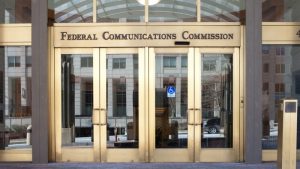State government IT officials said this week they are working to deploy their share of $1 billion of Federal cybersecurity grant funding approved last November by Congress as part of the $1.2 trillion bipartisan infrastructure bill.
Youngstown State University (YSU), in partnership with the University of Northern Iowa (UNI), has launched a new $10 million tech initiative that aims to create jobs and bolster the manufacturing supply chain.
California has awarded several new contracts that will supply the materials necessary for building 3,000 miles of broadband infrastructure, taking the state one step closer to delivering affordable high-speed internet service to communities throughout California.
Clark County, Nev., this week confirmed the appointment of Bob C. Leek to serve as the county’s new chief information officer (CIO).
A revision to California’s proposed budget calls for the merger of the state’s data analytics bureau and digital service agency creating a new office that would facilitate more efficient state operations and support one-time projects.
Code for America announced earlier this week that California, Colorado, Connecticut, and Louisiana “have committed to partnering with the Safety Net Innovation Lab (the Lab) to transform how social safety net services are delivered.”
Ransomware continues to be the biggest issue for most K-12 school districts across the country, according to Doug Levin, co-founder and national director of the K12 Security Information Exchange.
As the health care and education sectors have become prime targets for cyberattacks, experts from those sectors expressed their needs on May 18 for more funding and Federal collaboration to better protect the cyber posture of schools and hospitals.
The House of Representatives passed the State and Local Government Cybersecurity Act on May 17, which would promote increased cybersecurity collaboration between the Department of Homeland Security (DHS) and state, local, tribal, and territorial governments (SLTT).
The Federal Communications Commission on May 17 committed another $50 million to the Emergency Connectivity Funding (ECF) program to help schools expand broadband access and purchase of devices for students – moves that the agency hopes will help close the “homework gap” for students that don’t have access to reliable broadband service and devices.
Recent
-
 Trump Signs Order to Preempt State AI Laws and Push Single Federal Framework
Trump Signs Order to Preempt State AI Laws and Push Single Federal Framework -
 Government, Industry, Academia Collaboration Fuels AI Progress
Government, Industry, Academia Collaboration Fuels AI Progress -
 Indiana DOE Partnership Targets STEM, Digital Learning Tools
Indiana DOE Partnership Targets STEM, Digital Learning Tools -
 States, Schools Harness Data and Workforce Programs to Combat Fraud, Cyber Threats, and Service Outages
States, Schools Harness Data and Workforce Programs to Combat Fraud, Cyber Threats, and Service Outages









